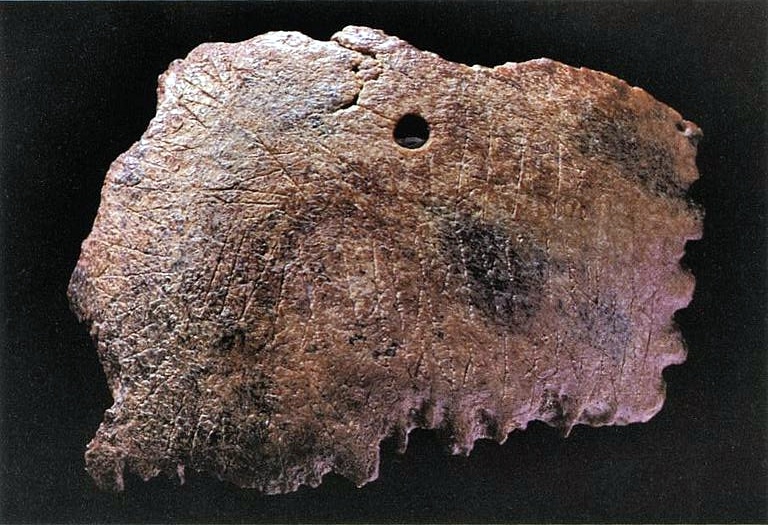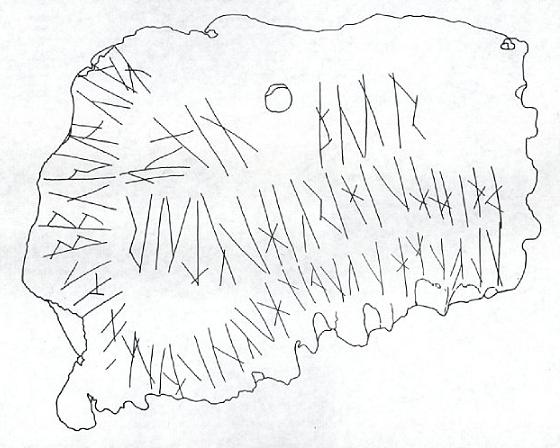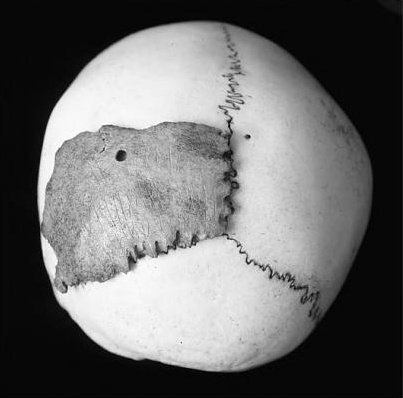
‘Ulf and Odin,
and High Tyr,
is help for Bur,
against these pain
and Dwarf sword,
Bur.’ (MacLeod and Mees 2006, p. 24)

The runic inscription appears to invoke a triple force of protectors to fight a Dwarf. These are Ulf or wolf, which may represent Fenrir, then Odin the chief Norse god, followed by High-Tyr, who is probably the warrior god Tyr. These will aid Bur, who is most likely Borr/Burri, Odin’s father (it is also possible that Ulf/Odin/High-Tyr, represent a divine trinity of the same god, Odin).

In Norse mythology Odin was thought to have healing powers, while dwarves were often associated with disease. In light of this the pendant may have been used as a talisman to protect against illness. The use of a human skull probably imbued the amulet with extra potency and this is not unlike the role played by corporeal relics in the Christian tradition.
References
MaCleod, M. & Mees B. (2006) Runic Amulets and Magic Objects, Boydell Press, Suffolk
.



Fascinating stuff, Colm. I look forward to reading every word on this site. Thanks.
Yes, fascinating. I discovered this site recently when one of its articles was reposted on another science/history site I frequent. It was a pleasure to have older posts to catch up on. Although I live in New England, some of my ancestors were Irish, a connection I value.
Glad you liked it Cat 🙂
Thanks Dan 🙂
Or maybe they knew more things about the brain and there is a connection that has not already been discovered. Besides the fact that is normal proceeding to give sense to what we find using what we have it would be interesting reading all the hypothesis also that come out and that are not verified.
I don’t think using a skull is macabre. If we think what other cultures of South America did and still do by sacrificing and using instruments I think that might be more macabre then this.
The recent discovery of the 550 Spaniards and allied killed, kept and sacrificed after months of prison (for who survived the ambush) sound much more hard then this, even if we have to keep in count that Vikings do not have history so we don’t know who they really were…
I love these things. You articles are easy to read and full of images. Thank you for sharing.
Best regards!
‘a triple force of protectors to fight a Dwarf’? Really? My own interpretation is rather more mundane I am afraid – it is possibly the dwarf in his head. The one with hammer. Like most runed inscriptions on amulets, it is a cure, in this case for a congenital headache.
I don’t think anyone is suggesting that there were real dwarves involved Robert, as the piece says dwarves were often symbolic of disease and ‘the pendant may have been used as a talisman to protect against illness’. A thumping (hammering) headache is a very good suggestion for that illness 🙂